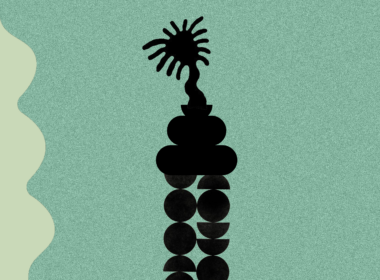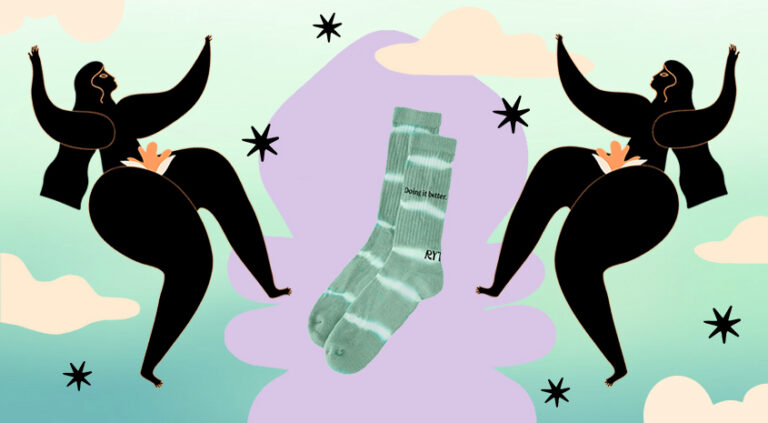Somewhere along the way, the clitoris and the G-spot have become as mysterious as Bigfoot and as elusive as a pair of jeans that fit just right. Have no fear, we’ve got you covered! This article will clear up all the mysteries surrounding female anatomy and will give you an answer to questions like “Is the G-Spot real?” and “Where is the clit?!”
Anatomy and Their Functions
Vulva
The term ‘vulva’ describes the external female genitalia. Think of the vulva as part of a treasure map – each point on the map serves an important purpose and some lead internally for further exploration.
Mons Pubis
The mons pubis is sometimes referred to as the ‘mound’ that is front-facing and usually is covered, at least partially, with pubic hair. This ‘mound’ results from fatty tissue built on top of the pubic bone and provides cushion and protection.
Bonus: the mons is where certain glands secrete pheromones, which are biology’s way of attracting and sending out ‘good vibes’ to potential sex partners.
Pubic Hair
Pubic hair (aka pubes) starts growing during puberty and provides protection to the vulva. It reduces friction during sexual activities (which can cause skin irritation) and also prevents dirt and germs from entering the genitals.
It’s very common for people to groom their pubic hair via shaving, waxing, or sugaring. This is based on personal preference – just know that it’s perfectly safe and normal to keep or remove as much or as little pubic hair as you’d like. Removing all pubic hair rose to popularity in the 1980s and has continued to be a trend that some say has been popularized by pornography and the thought that hair is dirty.
Glans Clitoris
The glans clitoris is the external ‘nub’ of the clitoris whose sole purpose is to provide pleasure; there are over 10,000 nerve endings compacted into the glans which makes it highly sensitive. The glans clitoris varies in size and color from person to person and is made of erectile tissue. Note that the size of the glans clitoris doesn’t correspond with the amount of pleasure a person experiences.
Clitoral Hood
The clitoral hood is the tissue that partially covers the glans clitoris as a means of protection. Kind of like your favorite turtleneck that you can pull over your face if you see your ex in public, it prevents irritation and overstimulation.
Labia Majora
The labia majora are often referred to as the ‘outer lips’ and together, they frame the labia minora and everything in between. When aroused, the labia majora become more sensitive as they become engorged from increased blood flow to the area.
Labia Minora
The labia minora, or ‘inner lips,’ begin at the clitoral hood and extend under the vaginal opening. The labia minora may or may not extend past the labia majora – everyone’s labia are different! These inner lips, when in the state of arousal, will swell and become darker in color, due to increased blood flow to the tissue, making them more sensitive – vulva owners may find that stimulating the labia minora is very pleasurable.
Urethral Opening
The urethral opening is very small and is at the end of the urethra, a tube that allows urine to leave the body. It can also be called the Urethral Meatus – ‘meatus’ refers to any opening in the body that leads from the inside to the outside.
When germs/bacteria enter the urethral opening, it can lead to a Urinary Tract Infection (UTI). This is why vulva owners are told to pee right after sex – it is thought to decrease the chances of UTIs as a result of sex, and while this isn’t scientific fact, it is ‘good housekeeping.’
Vagina
Naomi Wolf beautifully described the vagina as “a gateway to, and medium of, female self-knowledge” in her book Vagina: A New Biography.
The vaginal opening is found below the urethra and above where the labia meet at the bottom. The vaginal opening leads to the vaginal canal which all leads to the cervix, then the uterus. Menstrual blood leaves the body through this opening and vaginal sex is when the vaginal canal is penetrated. When aroused, a process called vaginal tenting occurs; during this process, the vaginal canal widens and lengthens and the cervix pulls up and out of the way.
It is said that the closer your vaginal opening is to your clitoris (less than an inch), the more likely you are to have the ability to reach orgasm from penetrative sex.
If you think of the vaginal canal as having three sections, the inner two-thirds of the vagina have pressure-sensitive nerve endings, but not touch-sensitive nerve endings. The vaginal entrance has touch-sensitive nerve endings. To lean into this ‘touch sensitivity,’ focus on light, teasing touches with fingers, toys, or the head of a penis right at the entrance of the vagina.
Corona (aka hymen)
The vaginal corona is what’s commonly referred to as the hymen, but because of the misconceptions and negative connotations of the term, there has been a shift in language.
The vaginal corona is a membrane, or a flap of tissue, that extends from the vaginal opening and can partially cover the vaginal opening. Imagine a scrunchie that is at the vaginal opening. The fact of the matter is that the corona has no proven medical or physiological purpose – it’s just leftover tissue from fetal development. This membrane does stretch to accommodate menstrual product insertion or penetration and is not proof of ‘virginity.’
A commonly held belief is that the corona/hymen completely covers the vaginal opening, but this is actually extremely rare and it requires minor surgery to ensure that discharge and menstrual blood can leave the vagina. Many people are born without coronas at all, and many people’s coronas are damaged or torn from non-sexual activities (like bike riding), horseback riding, or medical examinations.
Vulvar Vestibule
The vulvar vestibule is the smooth area between the labia minora that is home to the vaginal and urethral openings.
Perineum
The perineum is the area of skin between the bottom of the vulva and the anus. Underneath the skin are nerves and pelvic floor muscles. When caressed, licked, or stimulated with a vibrator, it can be very pleasurable.
Anus
The anus is the end of the gastrointestinal tract and is the base of the rectum. The rectum and anus are the ‘exit door’ for your poop but are also packed with nerve endings that can be stimulated for pleasure.
The Clitoral Structure
Glans Clitoris
The glans clitoris is the primary pleasure provider for many vulva owners; in fact, about 70% of vulva owners require clitoral stimulation to reach orgasm. When aroused, due to the fact that the glans is highly innervated, the glans become erect and engorged with blood. A common misconception is that the clitoris begins and ends with the glans, but actually, the glans is just the only external part of the clitoris – the internal portion is the clitoral body.
Fun fact: The clitoris actually continues to grow in size throughout its lifespan!
Clitoral Shaft
The clitoral shaft connects the glans to the clitoral body.
Crus Clitoris & Corpus Cavernosum
The clitoral ‘legs’ are responsible for the increased sensitivity of the labia as they lay internally behind the labia. The corpus cavernosum connects the clitoral shaft to the crus/crura.
Clitoral bulbs (aka vestibular bulbs)
The clitoral bulbs are the balloon-like parts of the clitoris that are between the crura. Unlike balloons, they are made of erectile tissue – just like the erectile tissue found in male penises. When aroused, they become erect and engorged and they press against the vaginal walls from the inside which promotes natural lubrication.
Breasts
Nipple
Each nipple has blood vessels in addition to nerves. They are found that the center of the areola.
Areola
The areolae contain Montgomery’s glands which secrete a lubricating oil and are the darker skin patches around the nipples.
Vulvar Glands
Bartholin’s Glands
The Bartholin’s glands are internal and are under the skin on either side of the vaginal opening; there is one on each side. Their job is to create the substance that contributes to the lubrication of the vaginal canal.
Skene’s Glands
The two Skene’s glands drain into the urethra and are on either side of the urethral tube. Their job is to contribute to lubrication and help fight off some infections. The fluid that they secrete is not urine and has a very similar makeup to that of the male prostate – this is why some refer to these glands as ‘the female prostate.’
These glands are responsible for female ejaculation in those to whom it occurs; it is said that the larger a person’s Skene’s glands are, the more likely they are to experience female ejaculation. Also, depending on the study you look at, somewhere between 10 and 15% of females ejaculate (aka squirt).
Pleasure Points & Types of Orgasm
Blended Orgasm
For vulva owners, the most reliable route to orgasm is penetration with direct clitoral stimulation, aka a blended orgasm. To achieve a blended orgasm, focus on simultaneous clitoral and G-spot stimulation.
While usually referring to a combined G-spot and clitoral orgasm, technically, a blended orgasm can refer to the combination of any two (or more) types of orgasm.
Clitoral Orgasm
For vulva owners, the second-most reliable method to reach orgasm is clitoral stimulation alone – only about a third of females, or 33% of females can reach orgasm without any clitoral stimulation. Clitoral orgasms come from stimulating the clitoral glans. Ways to stimulate the clitoris include: licking, sucking, rubbing directly on or around the glans, and many more.
G-Spot (‘vaginal’ orgasm)
The G-spot is the point at which the tissues surrounding the clitoris, urethra, and vagina meet. Some people may struggle to locate their G-spot or it might not feel particularly pleasurable – the thickness of the urethral sponge (spongy tissue around the urethra) actually affects how pleasurable this type of stimulation is.
The G-spot is often best stimulated with pressure via fingers/toys/a penis and is often about an inch and a half or two inside the vagina on the top vaginal wall. Focusing on this particular spot can lead to a G-spot orgasm. Squirting orgasms are often a result of G-spot and urethral sponge stimulation.
C-Spot (cervical orgasm)
The best time to embark on the journey to a cervical orgasm is during ovulation (the middle of the menstrual cycle). Cervical orgasms are said to be a more ‘full-body’ experience that results from firm and gentle pressure and movement on the cervix. Only about 7% of females have had a cervical orgasm and some females may find cervical stimulation very uncomfortable.
Vaginal O-spot
The O-spot, short for ‘the orgasm spot’ is directly across from the G-spot on the posterior vaginal wall (if you’re touching the G-spot, turn your finger and press on the other side). This stimulates vaginal and anal nerve endings. Only about 8% of females report sensitivity at the o-spot and it responds best to pressure rather than movement.
Anal Orgasm or The Anal O-Spot
The anus and rectum are full of clusters of nerve endings, which might be enough to make you shiver. The O-spot can also be reached via anal stimulation. On the front wall of the anal cavity, about one and a half to two inches in. Prolonged pressure on this point is more likely than thrusting-type movements to activate the O-spot during anal play.
A-Spot
The a-spot is found on the front wall of the vagina, deeper inside than the G-spot, right before you reach the cervix. Since it is so deep, the a-spot responds to pressure – you can stimulate this spot with fingers, a penis, or a toy by pressing into it with different pressure patterns.
U-spot
The U-spot refers to the external spot located below the clitoris at the urethra. Any urethral stimulation should be done gently with plenty of lubrication. External U-spot stimulation that is too strong or without proper lubrication creates friction and irritation on the sensitive U-spot tissue. Make sure that you wash your hands and toys well before using them on the U-spot – no one wants a UTI.
Nipple Orgasm
Yes, you can achieve orgasm through nipple stimulation alone! This is because the nipples and genitals connect to the same parts of the brain that perceives pleasure.
Nipple orgasm can be achieved through a variety of stimulation: licking sucking, pulling, twisting, pinching caressing – it just depends on the person. Some people enjoy using nipple clamps, pumps, or a variety of suction toys for pleasure.
Full-body
A full-body orgasm is just that – in your whole body. The sensation of orgasm isn’t limited to your genitals, but rather your entire being. Cool, right? Because orgasms rely on muscle contraction and release, you may experience those sensations throughout the whole body.
There are two ways to approach a full-body orgasm: the ‘tantric approach’ and the ‘layering approach.’ The tantric approach involves “deep breathing, energy ‘channeling,’ and patience.” Tantra, generally speaking, fosters stronger connections between you and yourself or you and a partner; it resembles a more spiritual sexuality practice. This includes slowing down (literally), being in tune with your body and how it’s feeling, using all of your senses, listening to what your body tells you that you need, exploring, deep breathing, and if you’re with a partner, syncing your breathing.
Core-gasm (exercise-induced orgasm, or EIO)
Some of us hate the gym… but an exercise-induced orgasm might be just the trick to turn me into a gym rat. In 1953, Alfred Kinsey wrote that “5% of women he studied claimed to experience orgasms during exercise, rather than exclusively during sex.” In 2014, Dr. Debby Herbernick and her colleagues found from a survey that “out of 2,000 Americans polled about their sex lives, 10% of men and women reported an orgasm from exercise.”
Core-gasms are most likely to result from ab workouts, weightlifting, pilates, or any other exercise that engages your pelvic floor muscles. Herbenick says you may notice them more when you are working out those muscle groups to the point of fatigue.
A few exercises that might do the trick are hanging leg raises, boat pose, and eagle pose.
Other Erogenous Zones
When I think of erogenous zones, I think of the scene from Friends where Monica tells us (and Chandler and Rachel) just how much she loves zone #7. Anyone else?
The truth is, there are tons of erogenous zones, or pleasure points, on the body, but everyone has favorites and least favorites. These zones are pleasurable because they are areas with high amounts of nerve endings concentrated in one spot. Some common ones (apart from the obvious ones and ones outlined above) are the mouth, lips, neck, inner thighs, feet, and toes. Other ones that you may not have considered include the scalp, ears, navel, the small of your back, inner arms, armpits, inner wrists, palms, and fingertips, and behind the knee. Anywhere you’re ticklish can be a great spot to try out.
Connection & Mindfulness
When practicing sexuality, it can be very helpful to incorporate mindfulness into your experiences. Headspace says, “sex is much more than just a physical activity. Your enjoyment of it has a huge amount to do with your attitude toward the experience and, as such, mindfulness can play a big part in helping you to have the best experience possible. The mental aspect of sex is hugely important in developing and maintaining intimacy and keeping that spark of passion alight.”
Not only that, but the most important pleasure organ you have is your brain! Desire, creativity, and calmness all contribute to more pleasant sexual practices.
For females, in particular, desire, sensuality, and pleasure all start in the brain – Emily Nagoski does an incredible job of explaining this in her book, Come As You Are, and in her Tedx Talk where she addresses the concept of sexual brakes and accelerators. Since we can’t do sexuality without our brains, we can learn to work with them.
To Each Their Own
While biology and physiology can take us far in the journey of understanding female anatomy and pleasure, there are limits to their guidance. The way around this? Ask and listen. Every body is different physiologically and everyone has different varying relationships with different parts of their body. Communication is the one true way to learn the ins and outs of the female form… but that’s not to say that preferences and bodies won’t change or evolve. After pregnancy, trauma, menopause, aging, chemotherapy, etc. bodies change and so will self-esteem and our relationships with our bodies. Each evolution may present its own challenges, but it also presents opportunities for exploration, connection, and reconnection.
Written & Illustrated by:
Gillian ‘Gigi’ Singer, MPH
American Board Certified Sexologist, Sexuality Educator, and Sex Ed Content Specialist







